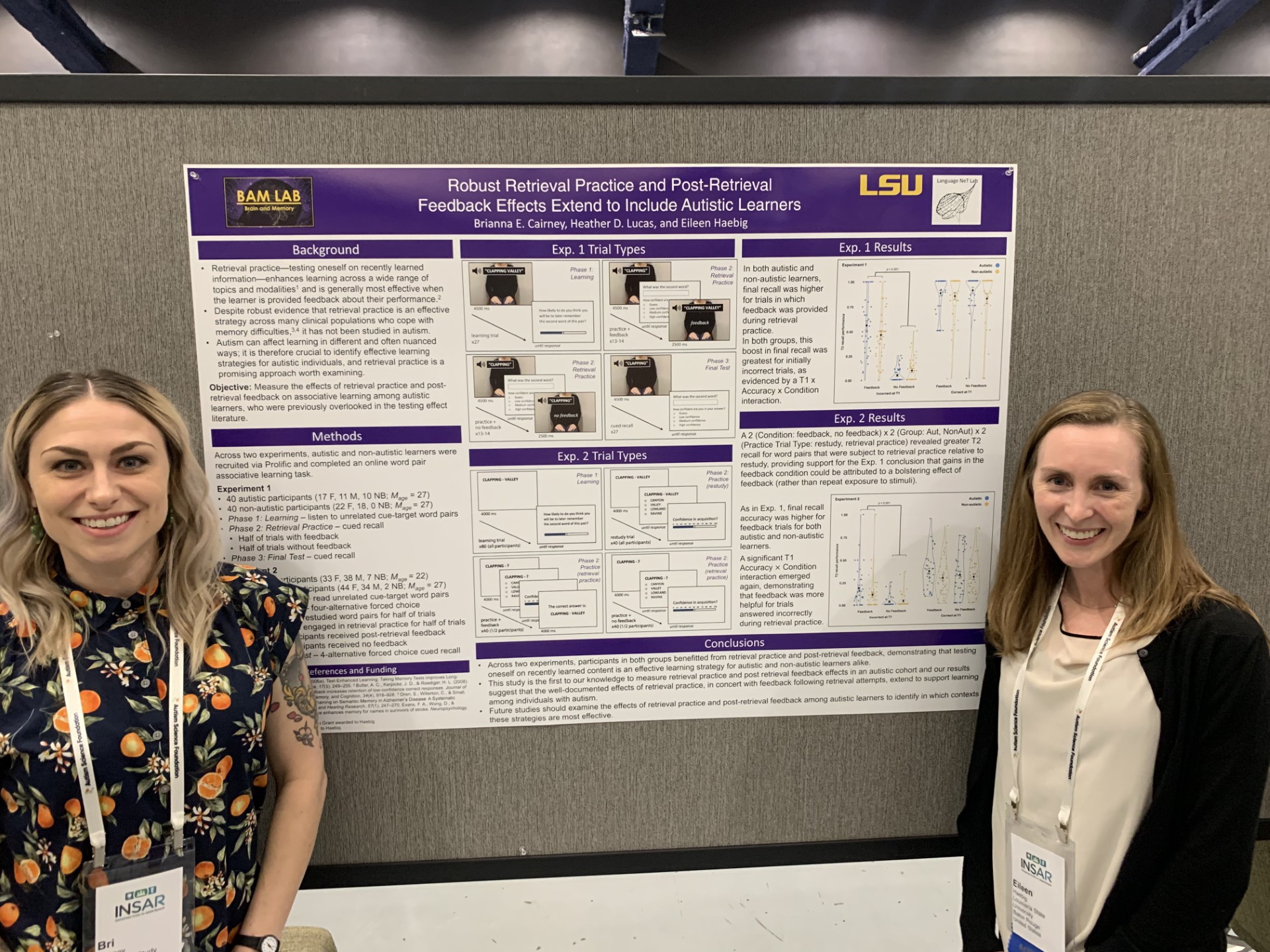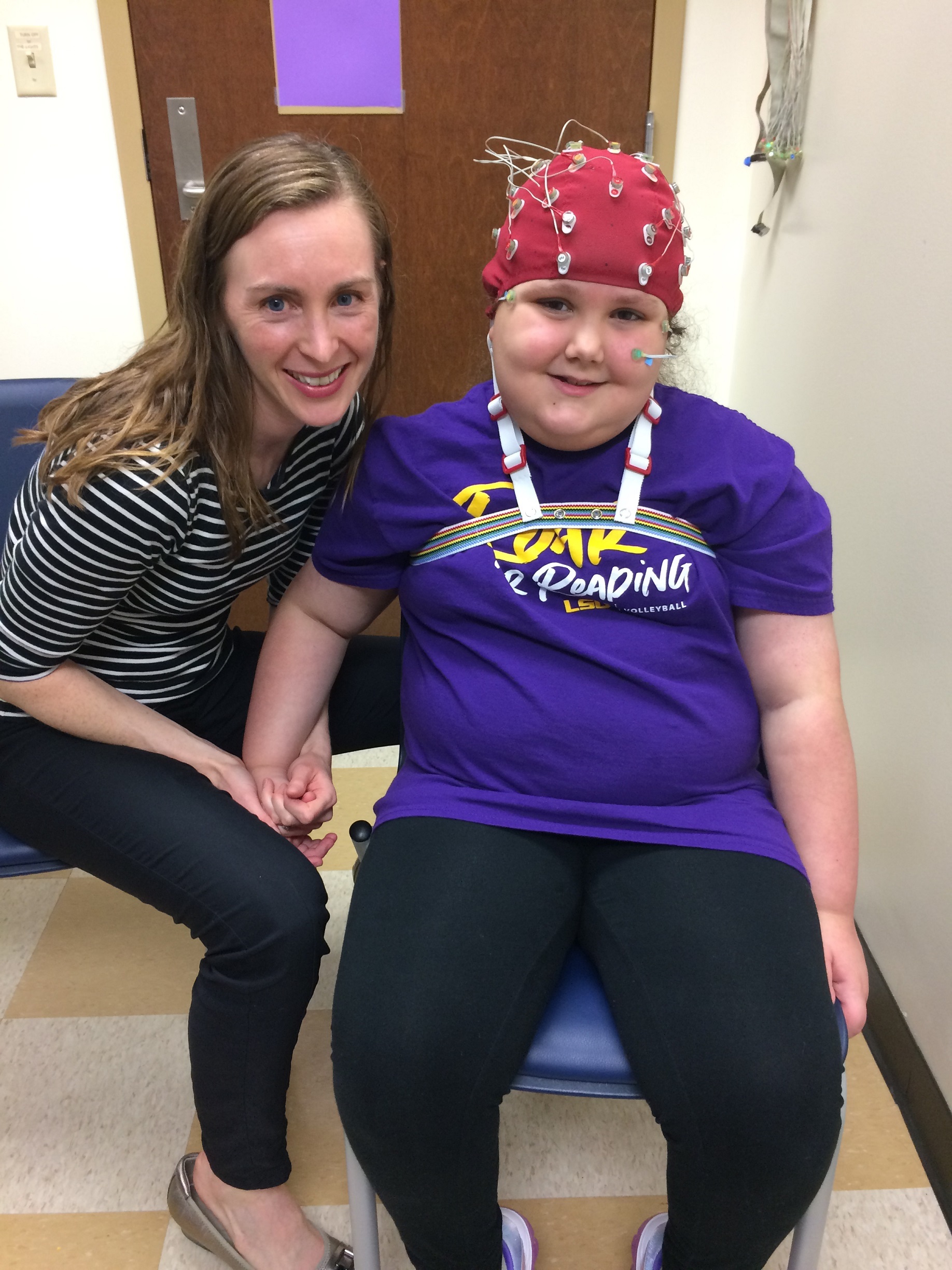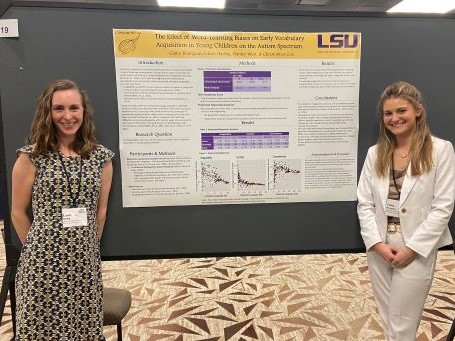Home
Language and Neurodevelopmental Trajectories Lab
(Directed by Dr. Eileen Haebig)
In the Language NeT Lab we examine how children with neurodevelopmental disorders develop language. Within neurodevelopmental disorders, our lab primarily focuses on language abilities in autistic children and children with developmental language disorder (DLD, also frequently referred to as specific language impairment, SLI). Although each group has unique features, we have learned that there are also areas of overlap. We also are interested in examining how language features within and across groups change over time. The Language NeT Lab employs a multi-level approach to address our overarching research questions. As such, research studies incorporate behavioral coding, eye tracking, language sample analysis, and event related brain potentials (ERPs) to examine language learning and processing in children with neurodevelopmental disorders. The ultimate goal of the Language NeT Lab is to gain insight into evidence-based approaches to support clinical assessment and intervention.
Click here for a video tour of the lab and research description.
Lab Accomplishments
- Dr. Haebig received a federal research grant from the National Institute of Deafness and Other Communication Disorders (NIDCD -- R21 Early Career Researcher award). The studies that are associated with this grant will examine whether retrieval practice (which involves testing newly learned information) promotes word learning in autistic children better than re-studying. Our recent work has documented that retrieval practice helps preschool children with typical development and preschool children with language disorders to learn new words. We will apply similar procedures to examine whether retrieval practice promotes word learning and generalization in autistic children between 4 and 10 years of age.
- Dr. Haebig received an LSU Provost grant to bring researchers to LSU to discuss NIH grant writing as a joint effort the with LSU MIND.
- One of our PhD students, Stan West, published his research in the Cognitive Science Society's Conference Proceedings and presented his work in a poster presentation in Rotterdam, Netherlands this past summer (West, Haebig, & Cox, 2024).
- Tengwen Fan and Dr. Haebig recently published research that examines the effect of rhyme on word learning at the behavioral and neural levels. Tengwen will extend this project for her dissertation (Fan, Decker, Momson, Haebig, & Schneider, 2025).
- PhD students, Stan West and Tengwen Fan, were selected to give a research talk at the highly competitive Boston University Child Language Development (BUCLD) conference in November 2025 (other co-authors: Eileen Haebig, Christopher Cox, and Arielle Borovsky). This work involves a collaboration with a research team at Purdue Universtity and is titled "Autistic and Non-autistic Overlap in Feature-Biased Language Acquisition".
- Dr. Haebig presented at The State of Neurodiversity in Baton Rouge conference, hosted by the Capital Area Autism Network. Dr. Haebig shared information about participating in autism research and practices that the lab uses to build relationships with autistic individuals and families, and to have this reflected in our research.
Recent Research Findings
- Retrieval Practice and Word Learning: In recently published studies, we have documented that children learn best when they
are asked to retrieve the new information that they have been taught (e.g., "What's
this one called again?" -- retrieval practice). Importantly, the best learning occurs
when there is a delay between when children are taught new information and when they
are asked to retrieve it. Although it's harder to remember what you have been taught
when there's a delay between learning and retrieval practice, this delayed retrieval
practice leads to optimal learning! So far, we have documented this finding in preschool
children with typical language development and preschool children with developmental
language disorders.
- Haebig et al. (2019) Journal of Speech, Language, and Hearing Research
- Leonard, Karpicke et al. (2019) Journal of Speech, Language, and Hearing Research
- Leonard, Deevy et al. (2019) Journal of Speech, Language, and Hearing Research
- Leonard et al. (2021) Journal of Neurodevelopmental Disorders
- Haebig, Leonard, Deevy, Schumaker, Karpicke, & Weber (2021) Journal of Speech, Language, and Hearing Research
- Leonard et al. (2022) Autism and Developmental Language Impairments
- Early Word Learning & The Language Environment: In a recent publication, Dr. Haebig and Dr. Christopher Cox applied computational modeling techniques to demonstrate that young children learn new words based on semantic information that they are exposed to in their learning environment (e.g., through interactions with adults). In the publication, they also shared a large database that they collected to measure the relationship among words. Importantly, this database measures adult-oriented word-to-word relationships and child-oriented word-to-word relationships, which differ because adults change the way that they speak when talking to young children. This work was recentlyexpanded to examine how autistic and non-autistic children grow their vocabulary knowledge.
- Gesture Processing in Autistic and Non-Autistic Adults: In a in-press publication, Brianna Cairney, Stanley West, Dr. Haebig, Dr. Christopher Cox, and Dr. Heather Lucas examined how autistic and non-autistic adults processed iconig gestures and nonsense gestures. The study revealed that autistic and non-autistic adults rated gesture meaningfulness similarly; however, the autistic adults provided more varied one-word descriptions of the gestures. These findings suggest that gesture processing is similar in the two groups and that lexical rather than semantic level differences underlie the group difference finding. We are sharing the gesture video databse and accompanyung nomring data on the Open Science Framework.


